As you explore the landscape of back pain management in 2025, you'll notice how telehealth and AI are reshaping the way you approach care. With personalized treatment plans and wearable tech for real-time monitoring, your involvement in managing pain has never been more active. Imagine engaging with virtual reality rehabilitation or integrating mindfulness practices into your routine. But what does this mean for your overall well-being, and how can these innovations empower you to take control? The answers might surprise you as we break down these emerging trends.
The Rise of Telehealth Services
In recent years, telehealth services have surged in popularity, transforming how you manage back pain. You no longer need to endure long waits in crowded waiting rooms just to consult a healthcare professional. With a few clicks, you can connect with specialists from the comfort of your home, making it easier to get the advice and care you need.
Telehealth allows you to schedule appointments that fit your busy lifestyle, often with greater flexibility than traditional visits. You can discuss your symptoms, treatment options, and pain management strategies in real-time via video calls or secure messaging. This convenience can greatly reduce the stress often associated with chronic back pain management, allowing you to focus on what truly matters: your recovery.
Moreover, telehealth provides access to a broader range of healthcare providers, including physical therapists and pain management specialists. This means you can receive tailored guidance and support specific to your condition without geographical limitations. You can also monitor your progress and adjust treatments as necessary, ensuring you remain actively involved in your care.
As technology continues to evolve, telehealth services are becoming more sophisticated, incorporating tools like wearable devices that track your physical activity and pain levels. This integration can enhance your understanding of how lifestyle factors impact your back pain, empowering you to make informed choices.
Embracing telehealth can lead to more effective management of your back pain, enabling you to reclaim your daily life.
AI-Driven Pain Management Solutions
AI-driven pain management solutions are revolutionizing the way you approach back pain treatment. By leveraging advanced algorithms and machine learning, these tools analyze your symptoms, medical history, and lifestyle factors to create personalized treatment plans. Instead of relying solely on traditional methods, you can now receive targeted recommendations that suit your unique needs.
One key advantage of AI is its ability to continuously learn and adapt. As you report changes in your pain levels or response to treatments, the AI adjusts your management strategy in real-time. This guarantees that you're always on the most effective path towards relief. You'll find that these solutions can help identify patterns in your pain, allowing for more proactive management rather than reactive measures.
Moreover, AI-driven platforms often integrate seamlessly with wearable devices, giving you real-time feedback on your physical activity, posture, and even stress levels. This holistic approach empowers you to take control of your back pain, making daily adjustments that can notably improve your overall well-being.
Additionally, many AI solutions come with user-friendly interfaces that guide you through exercises, stretches, and relaxation techniques tailored to your condition. You won't feel overwhelmed, as these platforms simplify complex medical jargon into actionable steps you can easily follow.
With AI-driven pain management, you're not just a passive recipient of care; you're an active participant in your healing journey, equipped with the tools and insights necessary to manage your back pain effectively.
Virtual Reality in Rehabilitation
Virtual reality is changing the way you experience rehabilitation for back pain.
With immersive pain relief techniques, you can engage in therapy sessions that feel both effective and enjoyable.
Enhanced physical therapy through VR not only aids in your recovery but also keeps you motivated.
Immersive Pain Relief Techniques
Emerging technologies are transforming the landscape of pain management, with immersive pain relief techniques like virtual reality (VR) gaining traction in rehabilitation settings.
You might be surprised to learn that VR can greatly reduce the perception of pain, helping you engage in your recovery more actively. By immersing yourself in a virtual environment, you can distract your mind from discomfort and enhance your motivation to participate in therapeutic activities.
Here are some key benefits of using VR for pain relief:
- Distraction: Engaging experiences take your focus off pain.
- Customization: Tailored scenarios can address individual needs and preferences.
- Enhanced Engagement: Interactive elements encourage participation and effort during rehab.
- Stress Reduction: Calming environments can lower anxiety levels associated with pain.
- Data Tracking: Progress can be monitored through analytics, providing insights for improvement.
As you consider options for managing back pain, think about how these immersive techniques could play a role in your rehabilitation journey.
Embracing VR not only helps ease your pain but also empowers you to take control of your recovery.
Enhanced Physical Therapy Sessions
Integrating technology into your rehabilitation can enhance physical therapy sessions considerably. One of the most exciting advancements is the use of virtual reality (VR). With VR, you can immerse yourself in a controlled environment that simulates real-life scenarios. This not only keeps your sessions engaging but also helps you practice movements that might be challenging in the real world without the fear of injury.
During VR sessions, your therapist can monitor your progress and adjust exercises in real time. You'll often find yourself working on strength, flexibility, and coordination in a fun and interactive way. This technology allows you to focus on your rehabilitation goals while enjoying an experience that feels more like a game than therapy.
Moreover, VR can provide you with instant feedback on your movements, helping you understand your body better and improving your skills. You may even notice a reduction in pain levels as you engage in these innovative exercises.
Personalized Treatment Plans
When it comes to managing back pain, crafting a personalized treatment plan can make all the difference in your recovery journey. Instead of relying on generic solutions, you deserve an approach tailored specifically to your unique situation.
This means taking into account not just your physical symptoms, but also your lifestyle, goals, and the underlying causes of your pain.
To develop an effective personalized treatment plan, consider incorporating the following elements:
- Comprehensive Assessment: Begin with a thorough evaluation by a healthcare professional who understands your history and specific needs.
- Targeted Exercises: Include exercises designed to strengthen your core and improve flexibility, tailored to your current fitness level.
- Pain Management Strategies: Explore options like over-the-counter medications, topical treatments, or mindfulness techniques to help you manage discomfort.
- Nutritional Guidance: Focus on incorporating anti-inflammatory foods into your diet, which can play an essential role in reducing pain and promoting healing.
- Regular Follow-ups: Schedule consistent check-ins with your healthcare provider to monitor your progress and adjust your plan as needed.
Holistic Approaches to Wellness
Holistic approaches to wellness recognize that your physical health is deeply intertwined with your mental, emotional, and spiritual well-being. When managing back pain, it's important to look beyond just the physical symptoms. You can take a more thorough view that includes stress management, nutrition, and emotional support.
One effective method is integrating mindfulness practices into your daily routine. Techniques like meditation or yoga not only help you connect with your body but also reduce stress, which can exacerbate pain. When you focus on your breath and body awareness, you may find a significant decrease in discomfort.
Nutrition also plays a significant role. Eating a balanced diet rich in anti-inflammatory foods can help alleviate pain. Think about incorporating more fruits, vegetables, whole grains, and healthy fats into your meals. These choices can enhance your overall wellness and support your body in healing.
Don't underestimate the power of emotional support either. Talking to friends, family, or a therapist can help you process feelings related to your pain. Engaging in community activities or support groups can provide a sense of belonging, which is crucial for emotional health.
Finally, consider exploring alternative therapies such as acupuncture or massage. These treatments can address both physical pain and emotional stress, offering a well-rounded approach to your back pain management.
Wearable Technology for Monitoring
As you seek thorough ways to manage back pain, wearable technology can enhance your approach to monitoring and understanding your condition.
These innovative devices provide real-time data about your body, helping you make informed decisions about your treatment and lifestyle adjustments. By integrating wearables into your daily routine, you can track various metrics that relate to your back pain and overall wellness.
Here are some key features of wearable technology for monitoring back pain:
- Posture Correction: Many wearables can alert you when you're slouching or not maintaining proper posture, which can help prevent discomfort.
- Activity Tracking: They monitor your physical activity levels, encouraging you to stay active while avoiding movements that could exacerbate your pain.
- Pain Level Logging: Some devices allow you to log your pain levels throughout the day, providing valuable insights for you and your healthcare provider.
- Sleep Monitoring: Quality sleep is essential for recovery. Wearables can track your sleep patterns, helping you identify disturbances that may contribute to your pain.
- Biofeedback: Advanced wearables offer biofeedback on muscle tension and stress levels, enabling you to recognize triggers and adjust your behavior accordingly.
Mindfulness and Mental Health
Practicing mindfulness can greatly impact your mental health, especially when dealing with chronic pain like back issues. By focusing on the present moment, you can reduce anxiety and stress that often accompany persistent pain. Mindfulness encourages you to acknowledge your feelings without judgment, allowing you to create a healthier relationship with your pain.
When you engage in mindfulness techniques such as meditation, deep breathing, or yoga, you help calm your mind and body. These practices can enhance your awareness of physical sensations, making it easier to identify pain triggers without becoming overwhelmed. This awareness can empower you to respond to discomfort more effectively, preventing negative thought patterns from spiraling out of control.
Regular mindfulness practice can also foster resilience. By learning to observe your thoughts and emotions, you develop skills to manage them better. This mental flexibility can help you cope with the ups and downs of living with back pain, giving you a greater sense of control over your situation.
Incorporating mindfulness into your daily routine doesn't have to be time-consuming. Even a few minutes of focused breathing or a short meditation can make a significant difference in your mental outlook. As you cultivate this habit, you'll likely notice improvements not just in your emotional well-being but also in your overall approach to managing pain.
In a world where chronic pain can feel isolating, practicing mindfulness offers a pathway toward greater self-compassion and mental clarity, ultimately enhancing your quality of life.
Preventive Strategies for Longevity
Regularly implementing preventive strategies can greatly contribute to your longevity and overall well-being. By taking proactive steps, you can reduce the risk of back pain and other health issues that impact your quality of life.
Here's how you can create a healthier future for yourself:
- Maintain a healthy weight: Excess weight can strain your back and lead to chronic pain. A balanced diet and regular exercise can help you achieve and maintain an ideal weight.
- Stay active: Incorporate regular physical activity into your routine. Low-impact exercises, like walking or swimming, can strengthen your back and core muscles, providing better support for your spine.
- Practice good posture: Whether sitting, standing, or lifting, maintaining proper posture can prevent unnecessary strain on your back. Be mindful of your alignment throughout the day.
- Engage in stretching and flexibility exercises: Regularly stretching your muscles can enhance flexibility and reduce tension in your back. Consider yoga or Pilates to improve your overall body awareness.
- Prioritize rest and recovery: Make certain you're getting enough sleep and taking breaks during the day. Proper rest is essential for your body to recover and regenerate.
Conclusion
In 2025, managing back pain has never been more accessible and effective. With telehealth services, AI-driven solutions, and innovative technologies like virtual reality, you can take control of your pain management. Embracing personalized treatment plans and holistic approaches empowers you to not just alleviate discomfort but also enhance your overall well-being. By integrating mindfulness and preventive strategies into your routine, you're setting yourself up for a healthier, pain-free future. Don't wait—start your journey today!



